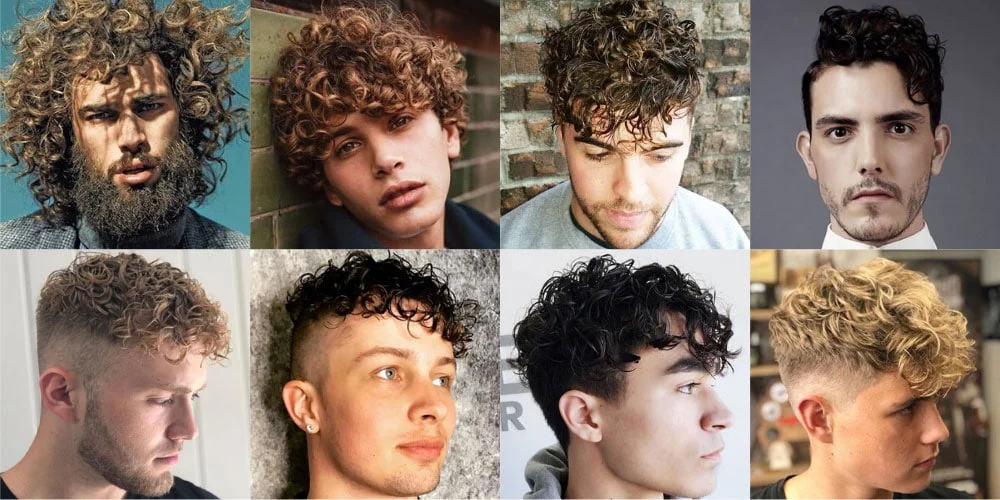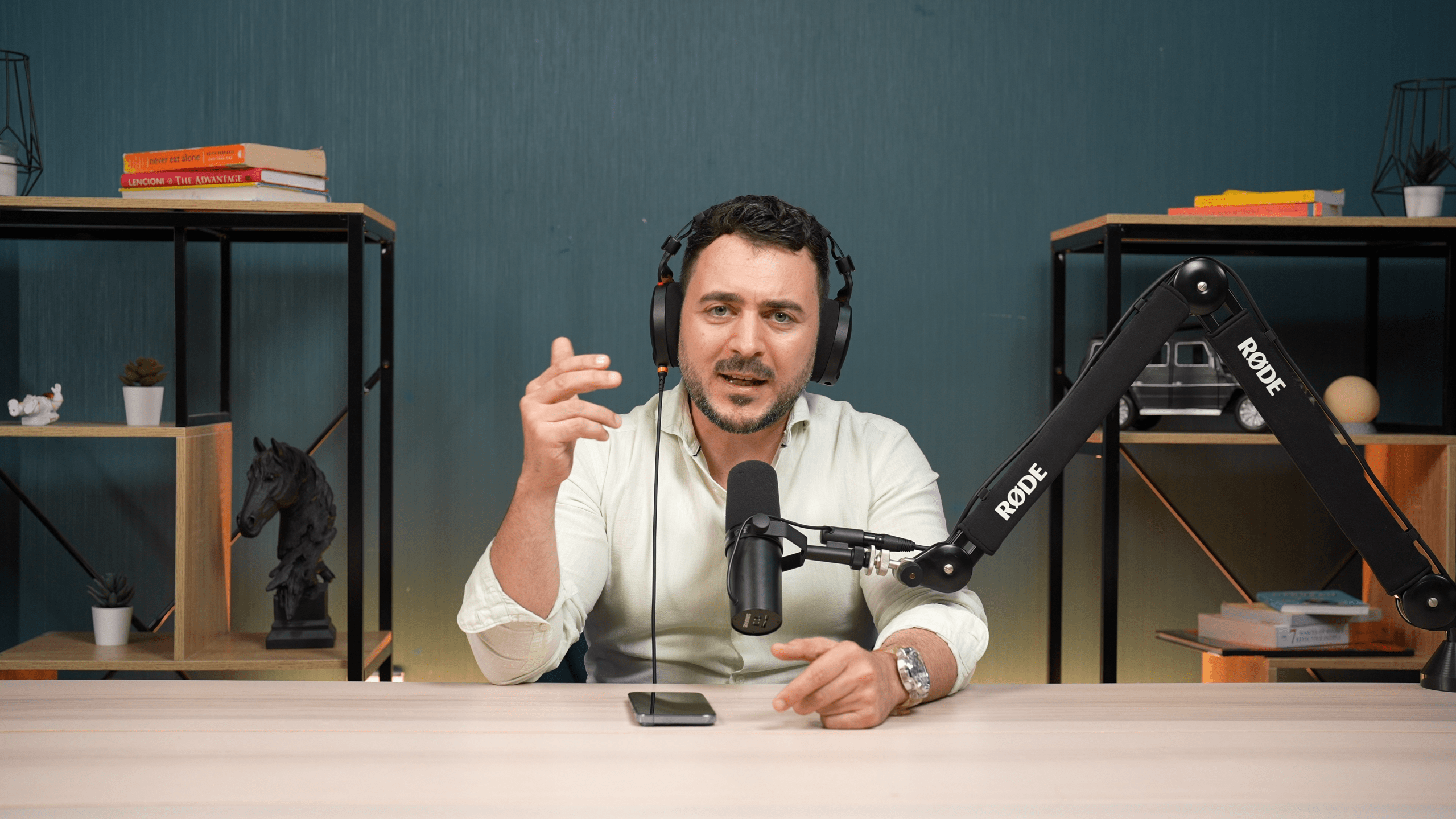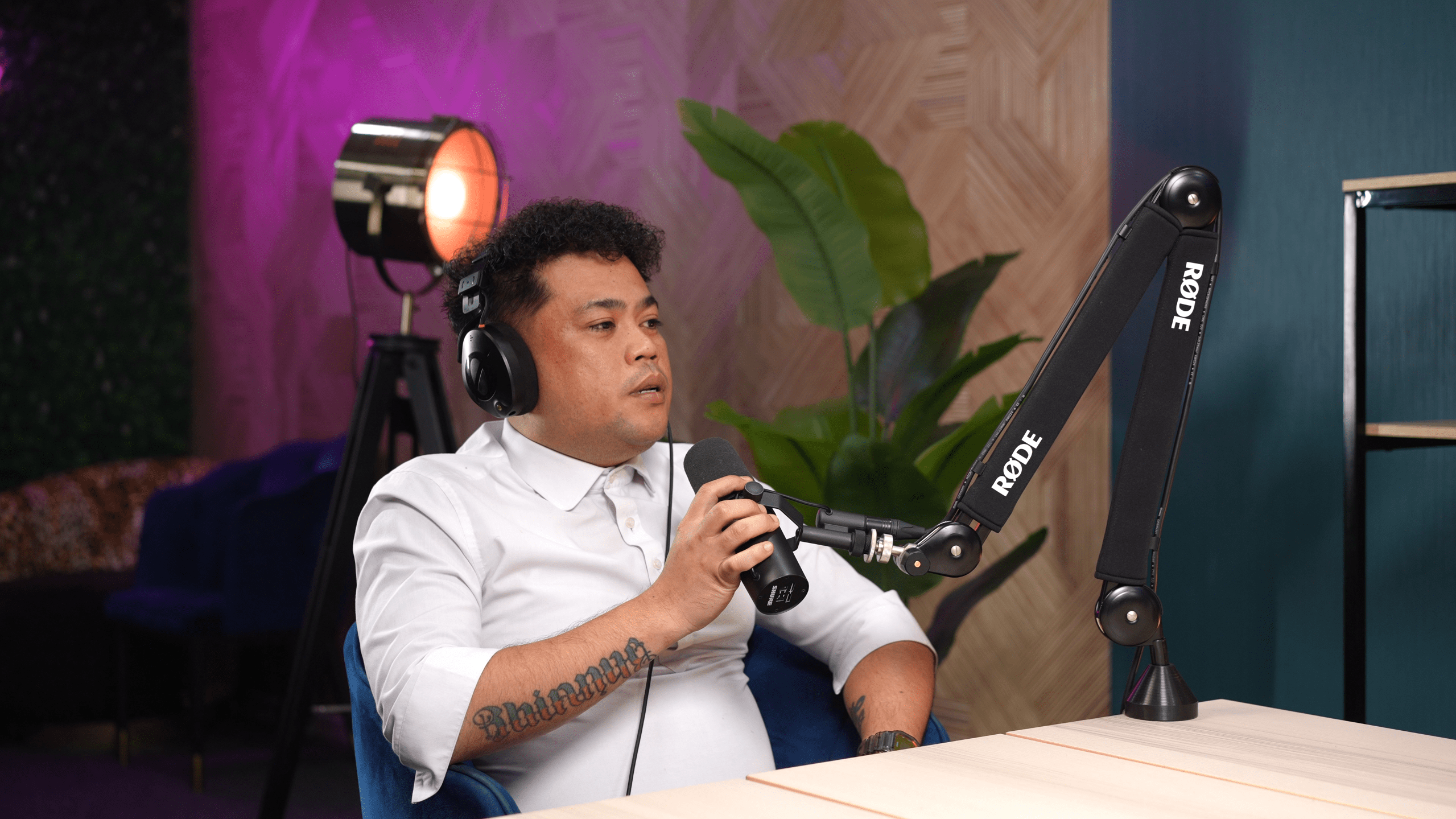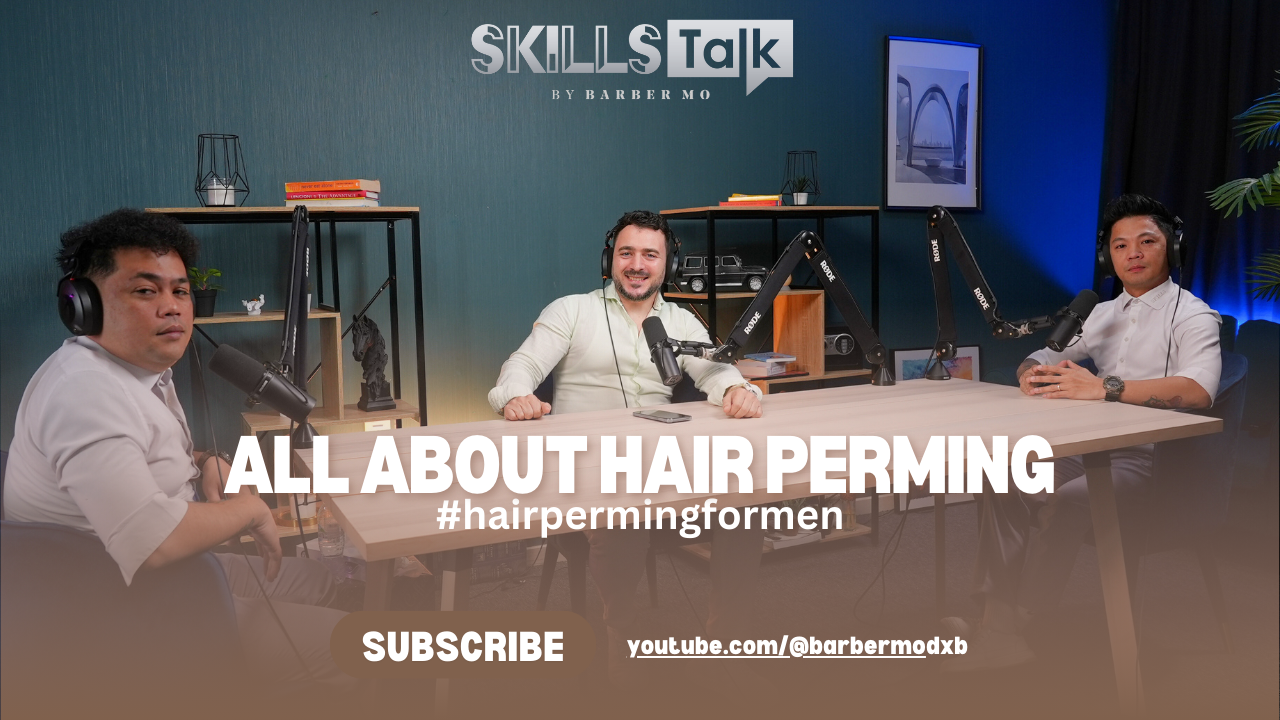All about Hair Perming | SKILLS Talk by Barber Mo | Episode 16
Episode Introduction
In this episode of SKILLS Talk, Mohamad Mir Ebrahim AKA Barber Mo dives deep into hair perming, one of the most desirable hair treatments today, appealing to all age groups—from young teens to mature adults. But why is it so popular? Who can get it? Who should avoid it? What are the risks? Today, my team and I will break it all down for you.

Full Podcast Episode of “All About Hair Perming”
Why Is Hair Perming So Popular?
Hair perming has surged in popularity because it allows people to entirely transform their hair texture. Whether you have straight, wavy, or curly hair, a perm can give you a fresh new look. Gone are the days when people relied on blow dryers and curling irons for temporary results. With a perm treatment, you can enjoy long-lasting hair texture changes for up to three to four months with the right aftercare.
From Asian straight hair to an Afro look, from flat hair to voluminous waves, hair perming offers endless possibilities. It caters to both men and women, making it an all-inclusive grooming trend.
Different Types of Hair Perming (Perms)
Not all perms are the same! Here are some of the most popular types:
- Spiral Perm – For those who want tight, well-defined curls, especially on longer hair.
- Textured Perm – Ideal for people with varying hair lengths, creating a structured, natural look.
- Root Perm – Adds volume to thin or fine hair by targeting the roots for a lifted effect.
- Body Wave Perm – Uses larger rods to create soft, voluminous waves.
- Bob Perm – A subtle perm that adds movement and bounce to medium-length hair.
- Pop Perm – One of the most popular styles, giving extra volume and tight curls, often chosen by pop stars.

At SKILLS by BARBER Mo, we have developed innovative perming techniques that go beyond the basics, tailoring unique styles for our clients.
The Science Behind Perming: How Does It Work?
A hair perm is a chemical process that alters the structure of your hair by targeting the bonds responsible for its shape. There are two main types of chemicals used:
- Alkaline Perms – Used in cooler environments for tighter curls.
- Acidic Perms – Used in warmer environments with heat tools, ideal for relaxing natural curls.

Barber Mo Talks About the Hair Perming Process
The process involves breaking and reforming hair bonds using rods to reshape the hair. A neutralizer is then applied to lock in the new texture, ensuring a long-lasting result.
How to Make Your Permed Hair Last Longer
While a perm can last up to three to four months, its longevity depends on proper aftercare. Here’s what you need to do:
- Use Sulfate-Free Shampoos & Conditioners – Harsh chemicals can strip moisture and weaken the curls.
- Deep Conditioning Treatments – Keeps hair hydrated and prevents frizz.
- Avoid Washing for the First 48-72 Hours – This helps set the perm properly.
- Use a Hair Filter – Especially in places with hard water (like Dubai) to prevent chemical buildup.
- Limit Heat Styling – Excessive heat can damage the permed curls.

Medical Risks of Hair Perming
While hair perming is an amazing transformation, it comes with risks if not done correctly. Some potential issues include:
- Hair Damage & Breakage – Overprocessing can weaken hair strands.
- Scalp Irritation & Sensitivity – Chemicals may cause allergic reactions or burns if not applied properly.
- Chemical Burns – If the scalp is sensitive or the solution is left too long.
- Fume Sensitivity – Some individuals may experience breathing issues due to the fumes produced during the process.
At SKILLS by BARBER Mo, we prioritize hair consultations before performing any chemical treatments to assess scalp health, hair history, and potential risks.

How to Avoid Hair Perming Risks
To ensure a safe and successful perm, follow these steps:
- Choose a Skilled Professional – Experience and knowledge matter when dealing with chemical treatments.
- Do a Patch Test – To check for any allergic reactions.
- Scalp & Hair Condition Check – If you have scalp conditions like eczema or extreme dryness, discuss alternatives.
- Pre-Treatment & Aftercare Treatments – Helps prepare the hair before perming and maintains its health afterward.

Hair Perming: Common Questions and Expert Solutions
What If I Don’t Like My Perm?
So, you’ve just had your hair permed, and you’re not happy with the results. What now? The most important thing is not to panic and avoid making any impulsive decisions that could further damage your hair. Here’s what you should do:
1. Give Your Hair Some Time
After a perm, your hair goes through a chemical process that alters its natural structure. If the curls feel too tight or too loose, wait a few days—sometimes, the curls will relax or settle into a more natural shape.
2. Consult Your Stylist
Your hairstylist understands your hair type, the chemicals used, and possible solutions. Before trying any DIY fixes, speak with your stylist about adjustments.
3. Professional Fixes Are Available
At our grooming lounge, we always have a Plan B for any perm-related concerns. If your perm is too tight, we can gently loosen it with specialized treatments. If it’s too loose, we can enhance the curls. However, it’s crucial to let your hair rest for at least one to two weeks before making adjustments.
4. Proper Hair Care & Treatment
While waiting, we recommend boost treatments to restore hair health before any further chemical processing. We also provide customized hair care products to help maintain your style and keep your hair in the best condition.

Can I Color My Hair After Perming?
This is another frequent question we receive. The short answer is: Yes, but not immediately. Here’s why:
1. Avoid Coloring on the Same Day
Hair perming and coloring both involve chemical processes that can weaken the hair shaft. If done on the same day, the peroxide in hair dye can break down the perm chemicals, leading to damage, dryness, and loss of curls.
2. Wait At Least a Week
We always recommend waiting at least one to two weeks before coloring your permed hair. This allows your hair to recover from the perming process and reduces the risk of breakage.
3. Choose the Right Hair Dye
When you do decide to color your hair, use ammonia-free and low-peroxide dyes to minimize chemical stress. Our team carefully assesses each client’s hair condition and recommends the safest coloring options.
4. Protect Your Investment
Perming and coloring are investments in your personal style. Rushing the process can lead to damage, requiring costly corrections. Patience ensures you enjoy both your perm and color without compromising hair health.
Final Thoughts on Hair Perming
Hair perming is more than just a beauty trend—it’s a game-changer for those looking to reinvent their look. Whether you’re going for tight curls, soft waves, or more volume, the right perm can enhance your personal style while minimizing daily styling efforts.
However, to avoid damage, always choose experienced professionals and invest in the right aftercare products. At SKILLS by BARBER Mo, we specialize in customized hair perming to give you a look that suits your personality and hair type.
If you’re considering a perm, book a professional consultation at SKILLS by BARBER Mo to discuss your hair goals and find the best solution for you!
Stay fresh, stay stylish. This is Barber Mo, and you’re tuned into SKILLS Talk! See you in the next episode!
For Booking and Consultation:
Premium Products for all your Grooming needs
We only use top-notch and premium grade hair and skin products for all our grooming services to guarantee the quality and results.






